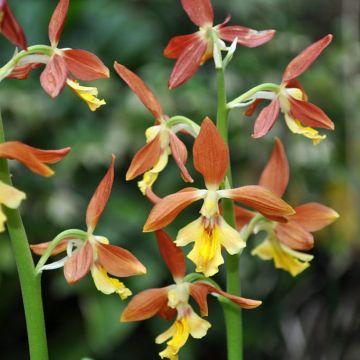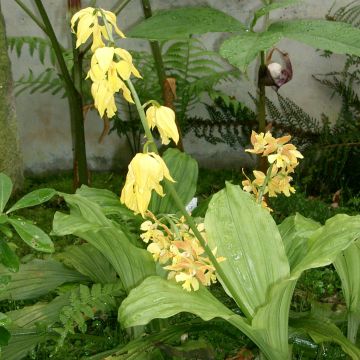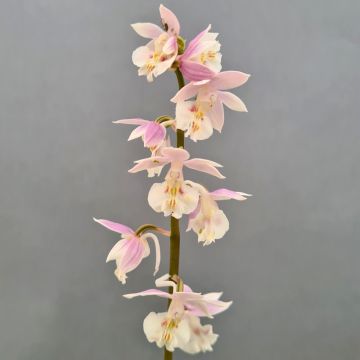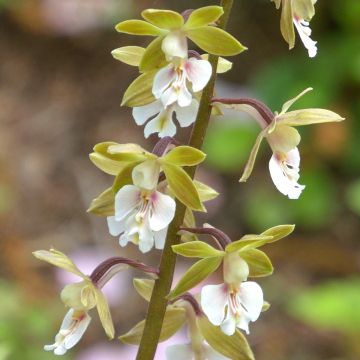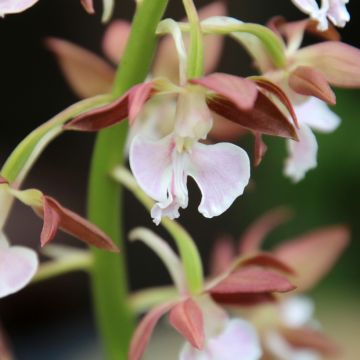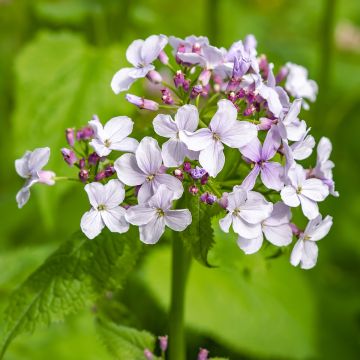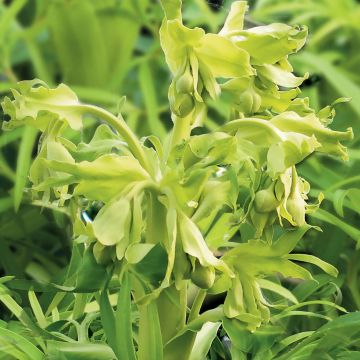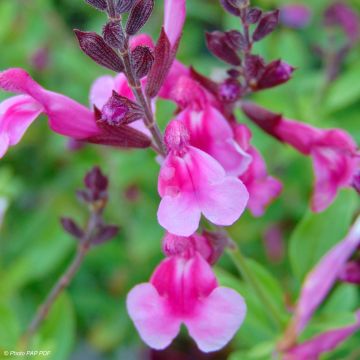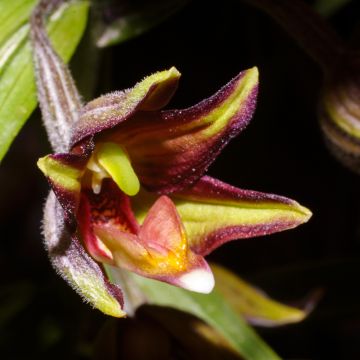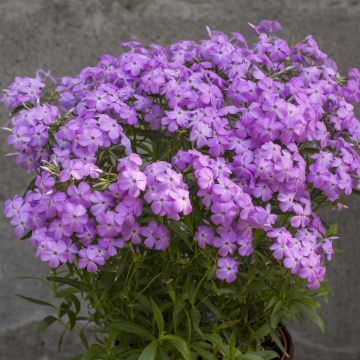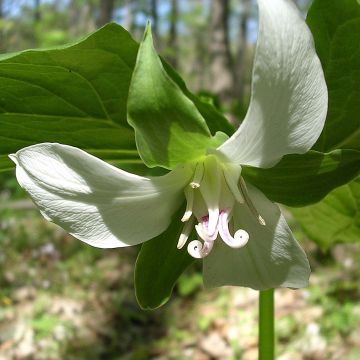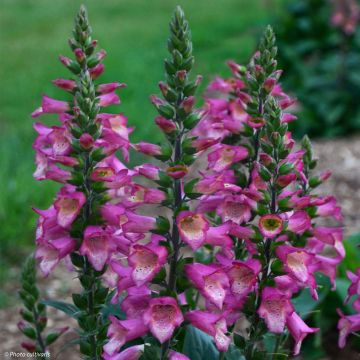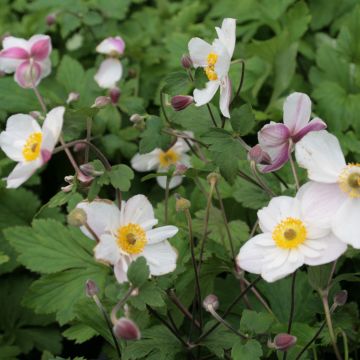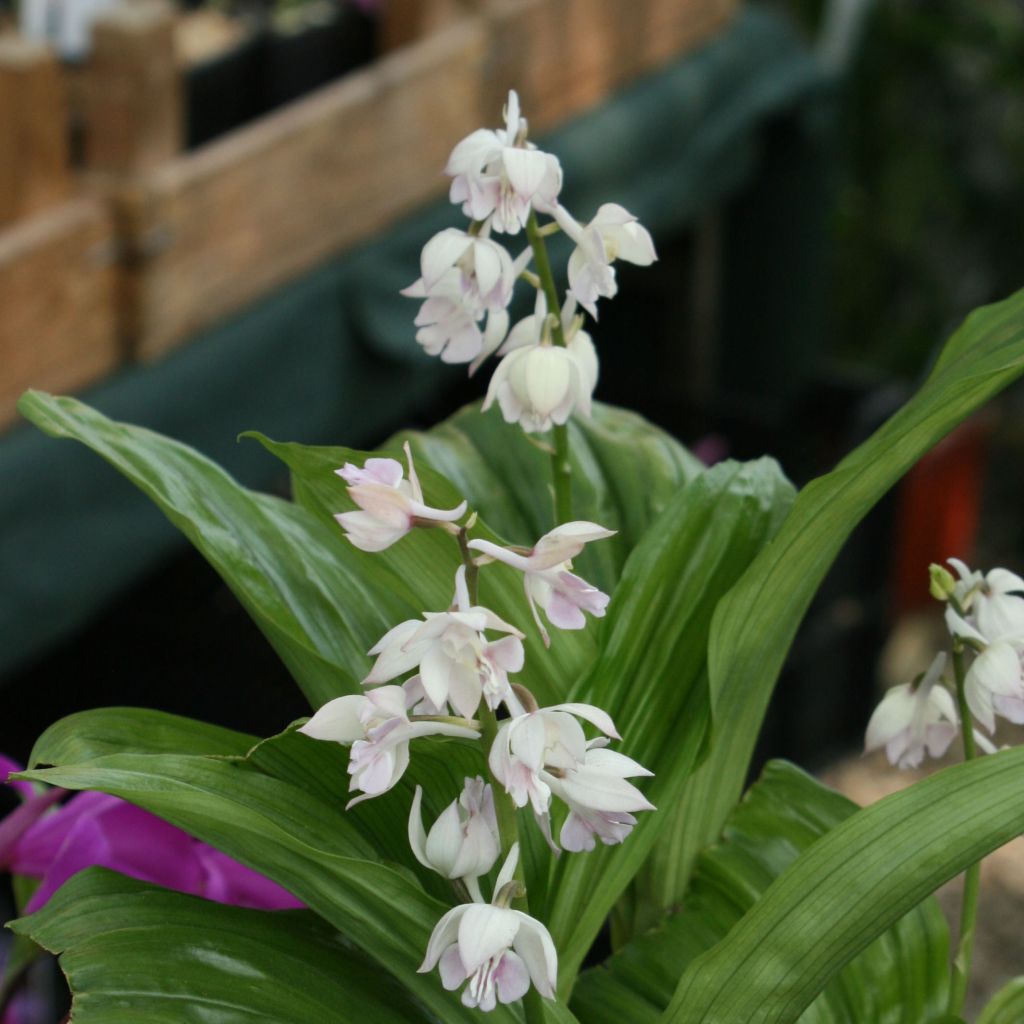

Calanthe aristulifera - Garden orchid
Calanthe aristulifera - Garden orchid
Calanthe aristulifera
Garden orchid
Why not try an alternative variety in stock?
View all →This plant carries a 6 months recovery warranty
More information
We guarantee the quality of our plants for a full growing cycle, and will replace at our expense any plant that fails to recover under normal climatic and planting conditions.
From €5.90 for pickup delivery and €6.90 for home delivery
Express home delivery from €8.90.

Does this plant fit my garden?
Set up your Plantfit profile →
Description
Calanthe aristulifera is a rare terrestrial orchid, still little used in gardens. It is a semi-hardy, slightly scented, Japanese mountain species, with a floral stem composed of refined flowers with light mauve to almost white sepals and petals. Its long, strongly pleated green leaves form beautiful evergreen clumps. It will thrive in shade, in thick humus in mild climate regions, or in pots to protect it from heavy frost elsewhere.
This terrestrial orchid comes directly from the mountains of Japan. In its natural habitat, it grows in sheltered places, in clearings or at the edge of forests, indicating its preference for partial shade in the garden, in soil rich in organic matter. It is moderately hardy for the genus. This plant grows from densely packed pseudobulbs around a rhizome, vaguely resembling the body of a shrimp. It produces beautiful, very light, diaphanous and slightly scented flowers in variations of pale mauve to almost white, along 2 to 3 stems 30 cm (12in) high in spring. The flower consists of 3 sepals and 3 petals, one of which is very different, called the lip. It is often this floral piece that is astonishing in orchids. The lip of Calanthe reflexa is elongated, curved downwards, and formed of 3 slightly pleated lobes. The evergreen, dark green leaves are nicely pleated and measure 15-25 cm (6-10in) in length and 5-8 cm (2-3in) in width.
This orchid of cool undergrowth likes acidic soils, rich in humus, and moist in summer, even occasionally waterlogged. It likes warmth, sheltered and bright places, but never direct sunlight. In regions with mild winters, it will retain its foliage, elsewhere, its leaves will be damaged by frost and will regenerate in early spring. The "rhizomatous" rootstock will slowly sucker to form beautiful clumps, expect to wait at least 3 years to obtain 4-5 inflorescences. An exceptional plant for knowledgeable gardeners. Plant Calanthe reflexa in a sheltered position, in light and humid undergrowth, or even near water points, in the company of arisaemas, ferns or hostas. As it is slightly less hardy than others, it is strongly recommended to grow it in a sheltered pot during periods of heavy frost in colder regions.
Report an error about the product description
Calanthe aristulifera - Garden orchid in pictures
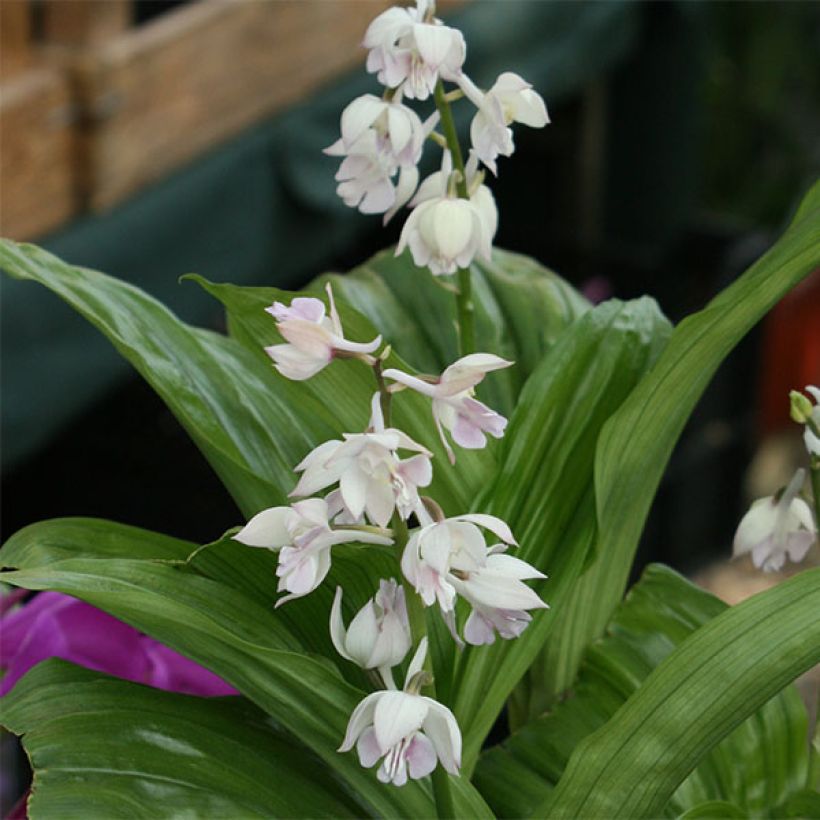

Plant habit
Flowering
Foliage
Botanical data
Calanthe
aristulifera
Orchidaceae
Garden orchid
Southeast Asia
Other Calanthe
Planting and care
Calanthe aristulifera likes sheltered environments, soils rich in humus, light, and occasionally moist. The soil should never dry out in summer but should never be waterlogged in winter. In a wet winter environment, the rootstock will rot. In mild climates, give it semi-shade, at the edge of large trees, with west being the best exposure. In heavy soil, add 1/3 leaf compost and 1/3 non-chalky sand, mixed with your topsoil to a depth and width of 20-25cm (8-10in). In regions with cold winters, it is better to grow this plant in a pot in order to protect it from frost, this cultivation method also protects it from slugs and snails. Cultivation in pots or containers should be in a mixture of 60% ericaceous soil, 20% potting soil, and 20% coarse sand. Terrestrial calanthes are quite demanding plants during the growing season: a weekly application of geranium-type fertilizer at half strength from mid-May to mid-September will be beneficial.
Planting period
Intended location
Care
-
, onOrder confirmed
Reply from on Promesse de fleurs
Rare and collectible perennials
Haven't found what you were looking for?
Hardiness is the lowest winter temperature a plant can endure without suffering serious damage or even dying. However, hardiness is affected by location (a sheltered area, such as a patio), protection (winter cover) and soil type (hardiness is improved by well-drained soil).

Photo Sharing Terms & Conditions
In order to encourage gardeners to interact and share their experiences, Promesse de fleurs offers various media enabling content to be uploaded onto its Site - in particular via the ‘Photo sharing’ module.
The User agrees to refrain from:
- Posting any content that is illegal, prejudicial, insulting, racist, inciteful to hatred, revisionist, contrary to public decency, that infringes on privacy or on the privacy rights of third parties, in particular the publicity rights of persons and goods, intellectual property rights, or the right to privacy.
- Submitting content on behalf of a third party;
- Impersonate the identity of a third party and/or publish any personal information about a third party;
In general, the User undertakes to refrain from any unethical behaviour.
All Content (in particular text, comments, files, images, photos, videos, creative works, etc.), which may be subject to property or intellectual property rights, image or other private rights, shall remain the property of the User, subject to the limited rights granted by the terms of the licence granted by Promesse de fleurs as stated below. Users are at liberty to publish or not to publish such Content on the Site, notably via the ‘Photo Sharing’ facility, and accept that this Content shall be made public and freely accessible, notably on the Internet.
Users further acknowledge, undertake to have ,and guarantee that they hold all necessary rights and permissions to publish such material on the Site, in particular with regard to the legislation in force pertaining to any privacy, property, intellectual property, image, or contractual rights, or rights of any other nature. By publishing such Content on the Site, Users acknowledge accepting full liability as publishers of the Content within the meaning of the law, and grant Promesse de fleurs, free of charge, an inclusive, worldwide licence for the said Content for the entire duration of its publication, including all reproduction, representation, up/downloading, displaying, performing, transmission, and storage rights.
Users also grant permission for their name to be linked to the Content and accept that this link may not always be made available.
By engaging in posting material, Users consent to their Content becoming automatically accessible on the Internet, in particular on other sites and/or blogs and/or web pages of the Promesse de fleurs site, including in particular social pages and the Promesse de fleurs catalogue.
Users may secure the removal of entrusted content free of charge by issuing a simple request via our contact form.
The flowering period indicated on our website applies to countries and regions located in USDA zone 8 (France, the United Kingdom, Ireland, the Netherlands, etc.)
It will vary according to where you live:
- In zones 9 to 10 (Italy, Spain, Greece, etc.), flowering will occur about 2 to 4 weeks earlier.
- In zones 6 to 7 (Germany, Poland, Slovenia, and lower mountainous regions), flowering will be delayed by 2 to 3 weeks.
- In zone 5 (Central Europe, Scandinavia), blooming will be delayed by 3 to 5 weeks.
In temperate climates, pruning of spring-flowering shrubs (forsythia, spireas, etc.) should be done just after flowering.
Pruning of summer-flowering shrubs (Indian Lilac, Perovskia, etc.) can be done in winter or spring.
In cold regions as well as with frost-sensitive plants, avoid pruning too early when severe frosts may still occur.
The planting period indicated on our website applies to countries and regions located in USDA zone 8 (France, United Kingdom, Ireland, Netherlands).
It will vary according to where you live:
- In Mediterranean zones (Marseille, Madrid, Milan, etc.), autumn and winter are the best planting periods.
- In continental zones (Strasbourg, Munich, Vienna, etc.), delay planting by 2 to 3 weeks in spring and bring it forward by 2 to 4 weeks in autumn.
- In mountainous regions (the Alps, Pyrenees, Carpathians, etc.), it is best to plant in late spring (May-June) or late summer (August-September).
The harvesting period indicated on our website applies to countries and regions in USDA zone 8 (France, England, Ireland, the Netherlands).
In colder areas (Scandinavia, Poland, Austria...) fruit and vegetable harvests are likely to be delayed by 3-4 weeks.
In warmer areas (Italy, Spain, Greece, etc.), harvesting will probably take place earlier, depending on weather conditions.
The sowing periods indicated on our website apply to countries and regions within USDA Zone 8 (France, UK, Ireland, Netherlands).
In colder areas (Scandinavia, Poland, Austria...), delay any outdoor sowing by 3-4 weeks, or sow under glass.
In warmer climes (Italy, Spain, Greece, etc.), bring outdoor sowing forward by a few weeks.

































